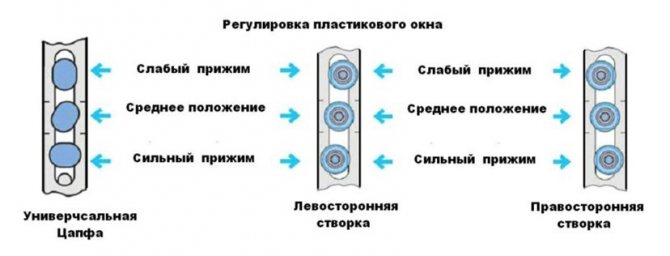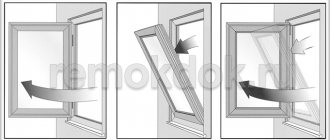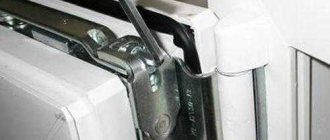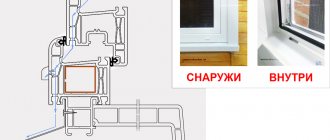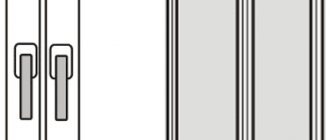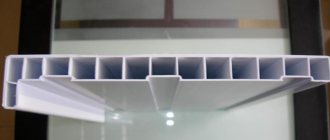Despite the fact that all modern windows made of PVC, wood or aluminum are made with a large margin of safety, and the fittings for them are highly reliable, periodic adjustment and maintenance of structures is still necessary. The design of the window fittings is such that it is not difficult to adjust the window with your own hands. To cope with this task, you need to have the necessary tools, as well as know the main knots of adjustment.
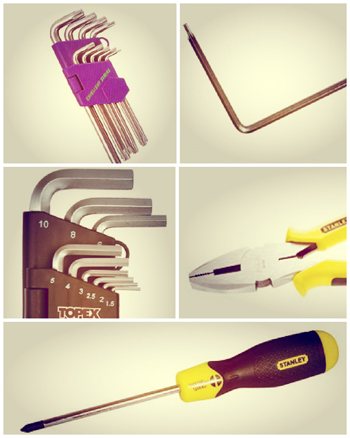
Necessary tools for adjusting windows
Fig. 1. Tools for adjusting windows.
Saying that we can adjust double-glazed windows with our own hands, we understand that we will need certain tools. Required set:
- hexagon (4 mm);
- Phillips screwdriver, flathead screwdriver;
- pliers;
- asterisks;
- screwdriver;
- chisel;
- lubricating oil.
What and why do we need?
The main tool will be a hexagon, with the help of it we carry out the basic adjustment.
Pliers are useful for switching windows to summer-winter mode and for replacing fittings.
A screwdriver and screwdrivers will be needed to work with the bolts, sprockets are required for some models of insulating glass units.
The double-glazed unit is “unsealed” with a chisel, the function of the oil is self-explanatory. If you do not have something from this list, then we advise you to purchase the missing tools - there will always be a use for them.
Base points of window adjustment
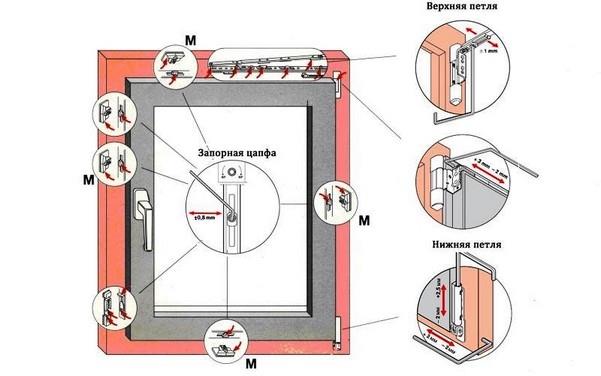

Fig. 2. Base points of window adjustment.
Self-adjustment of windows is not a difficult task, because there are only five points, working with which will save us from the problems that have arisen:
- the point of the vertical position of the sash adjustment is located on the lower hinge;
- on the lower loop, we find the horizontal adjustment point of the lower corner;
- working with the top hinge, horizontally adjust the top of the sash;
- in the center, next to the locking mechanism, there is a point responsible for the sash adjoining, for the clamping force;
- at the bottom of the pivot, the sash contact force is also regulated.
In addition to these points, the cause of problems with heat, hydro and sound insulation can be improper design or sealing of slopes. Therefore, be sure to find the cause of the problem before starting work, because if it is in the slopes, a hexagon and a screwdriver will not help us, and the help of a master will be needed.
How to adjust the plastic door hardware
Adjustment of plastic door fittings is quite simple. But there are some peculiarities. It should be performed when the following signs of malfunction occur:
- the door closes too tightly, or, on the contrary, a draft is felt through it;
- the canvas sags, therefore, when closing, it clings to the door frame.
Tools Required for Adjustment
The following tools are required to complete the adjustment process:
- pliers or pliers;
- screwdriver;
- L-shaped hex keys - 3, 4, 5 mm.
Performing horizontal slack adjustment
The process of adjusting the door in the horizontal plane is as follows:
- open the sash, then unscrew the decorative overlays from the hinges using a hexagon (3 mm);
- the door is slightly covered, you should find a long horizontally located screw;
- misalignment is eliminated by turning the screws in the middle and upper hinges;
- to adjust the evenness of the shift, it is necessary to remove the lining from the lower hinges, and then tighten or loosen the corresponding screw.
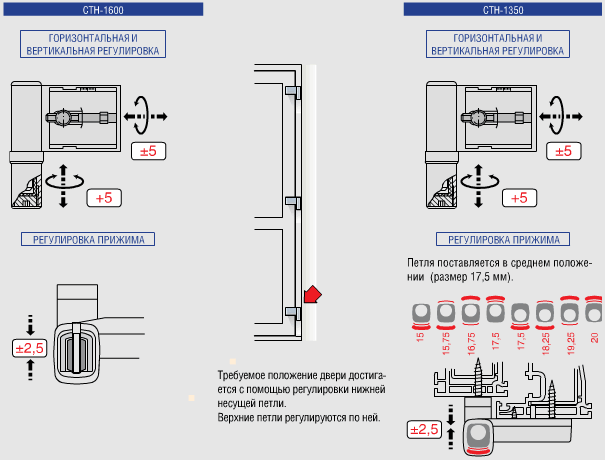

Adjusting the door horizontally and vertically
Also, it is imperative to adjust the pressing force of the door leaf to the box:
- we find special adjusting pins - usually they are located in the end part;
- we turn the eccentric with pliers or a screwdriver, focusing on the existing serifs.
Usually, to increase the pressing force, the pin is turned by a mark from the door frame, to decrease - towards it.
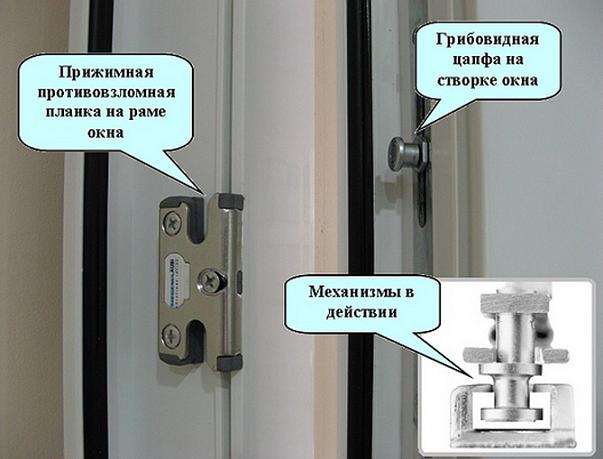

Adjusting the clamping force of the plastic door
Types of window adjustments
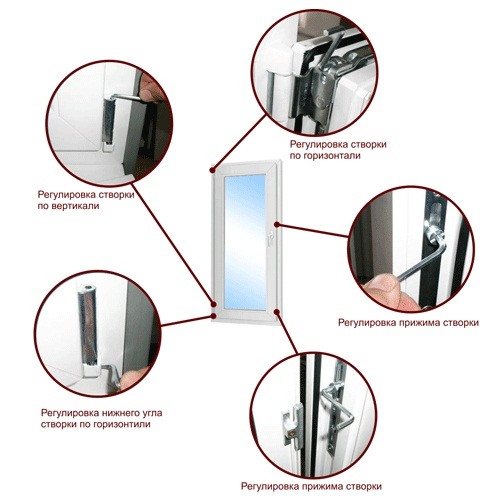

Fig. 3. Types of window adjustments.
Adjustment of double-glazed windows is not difficult, there are several types of it.
- Horizontal adjustment - occurs by acting on the upper and lower hinges and it is allowed to get rid of the bevel or small movement of the glass unit. In this case, the adjustment process is possible both in the open and in the closed state, with the help of the upper hinge, all work is carried out only if the sash is open.
- Vertical adjustment - carried out by acting on the lower hinge, allows you to change the sash pressure.
- Sash pressure adjustment - carried out by acting on the eccentrics located around the frame perimeter.
- A separate type is working with a handle, replacing it or regulating its movement.
- Replacing the seal - this operation is needed once every 10-15 years and is easily carried out independently - we take out the old seal and insert a new one.
Thus, we see that knowing the problem and what we want to achieve as a result, we can easily find the required type of adjustment and carry out all the work.
Window handle problems
Replacing the window handle or installing a handle with a lock
Fuse handles may be needed in the nursery, as well as in other areas of the house where a small child lives. This important detail will not allow the kid to open the window on their own. To install a new handle, you need to remove the old one by unscrewing the plug and unscrewing the bolts. Then you need to gently swing the handle and pull it out. The new handle is put in place of the old one in the same position and bolted in place.
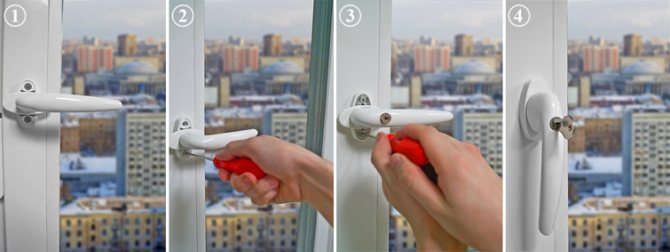

If the handle is loose
To fix the malfunction, it is enough just to tighten the fasteners of the part more. To do this, it is necessary to release the bolts hidden under the plug - a rectangular plate located under the handle. The plug must be pry off at the top and bottom and rotated 90 degrees. There are two bolts under it, which need to be tightened with a screwdriver. In order to move the plug, do not use sharp objects, as this can damage the profile.
Handle sticks or does not close fully
First of all, you need to understand what caused this problem. Maybe the handle mechanism needs lubrication or cleaning. The second reason may be the maximum clamping on the sash. In this case, it must be weakened.
It is not difficult to clean the handle mechanism. To do this, it must be removed, cleaned of dirt with a brush or vacuum cleaner, lubricated and put back. For lubrication, it is recommended to use WD-40 with a nozzle that easily penetrates into the recesses of the structure. In general, oil or aerosol is recommended whenever adjustments are made to PVC window structures.
If the problem with the handle arises from excessive clamping force, then it is necessary to loosen it. For this, the eccentrics are adjusted at the end of the sash from the handle side, and the bolts on the hinges are also adjusted.
If the handle is jammed
Even if the handle has stopped moving, you should not be intimidated.This situation is not a reason to replace fittings. As a rule, the handle gets stuck due to the actuation of the lock, which does not allow the window to change position (open upwards) when the sash is open. To solve the problem, simply pull back the lock lever manually.
The locking lever is located at the end of the sash from the handle side. What does he look like? The lever can be in the form of a plate, which is screwed to the end and retracted at an angle to the seal if the sash is open. The second option is a clip that fits over the seal.
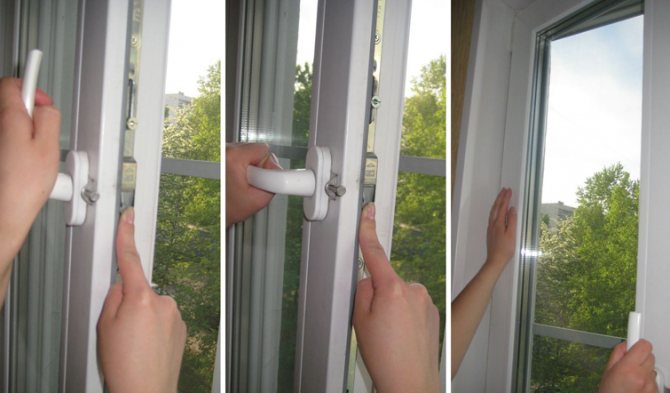

When adjustment of PVC windows is necessary
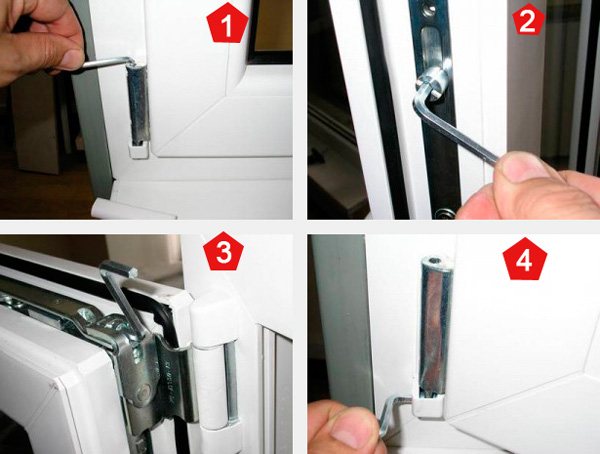

Fig. 4. Possible adjustment.
Often we have such problems with double-glazed windows, for the solution of which there is no need to call a master. We just need a basic set of tools and some free time to adjust the window ourselves.
Self-adjustment is necessary in a number of cases:
- there was a problem with the adherence of the frame to the sash:
- - there is friction between the frame and the sash, the sash does not close;
- - a gap has appeared and the sash does not close tightly;
- having problems with the pen:
- - it is not possible to bring the handle to the “closed” position;
- - it is difficult to transfer the shutters to the desired mode;
- - the handle is broken;
- - the handle moves tightly, or too relaxed;
- weakened heat, hydro and sound insulation;
- it is necessary to install a fuse on the handle - this operation is necessary if children appear in the house: a special protective mechanism will not allow the child to open the window on his own, respectively, the double-glazed window will be safe.
When to change the glazing mode?


When the frame begins to blow when the temperature drops to 4-8 ° C below zero, it's time to switch it to winter mode. When the temperature on the street rises in spring, the operating mode of the window is changed to summer. In the "winter" mode, the sealing circuit is very worn out. If not necessary, it is better to operate the window in summer mode. When the rubber in the opening wears out, it is changed.
General principles for adjusting window sashes
Fig. 5. General principles of adjustment.
Before talking about specific types of sash adjustment, we would like to draw your attention to several important points:
- it is necessary to find out what the problem is, decide what type of adjustment is suitable for it, stock up on the necessary tools, read the instructions and only then do the work;
- when adjusting the position of the flaps, do everything gradually: the ideal option is to move the flap 1 mm at a time so as not to damage the mechanisms;
- do not disassemble and assemble fittings on your own, it is better to entrust the detailed work to the master.
Horizontal adjustment
On the bottom and top hinge we can find hex holes. With the glass unit open and closed, we can adjust the lower hinge: turning the hex key clockwise will tighten the sash. In this case, the bottom of the sash, located on the opposite side, will rise. Rotating the hexagon counterclockwise will help us lower the bottom of the sash, while releasing the tension. This adjustment can only be performed when the window is open, and the shift there is carried out within 2 mm.
Preparing for adjustment
Adjustment of plastic balcony doors requires the implementation of the following tools and tools:
- a hexagon L-shaped key in most cases by 4 mm;
- plastic linings.
Next, you need to find a reason why the door does not lock well.
- Open the door and carefully examine the seal.
- Determine in which direction the door leaf was displaced... Detailed instructions with a photo on adjusting plastic doors to adjust the key. In this case, the seal will be squeezed, and traces from the sash will be clearly visible on it.
- An additional sign of a displaced sash will be the poor functioning of the balcony door handle, which will turn with great effort, or the stroke of its rotation will decrease..
The device and principle of operation of PVC window fittings
If you have never paid attention to how your window is arranged, this should be done before adjusting the fittings. Window fittings are a complex mechanism consisting of many elements. It ensures correct and safe operation of the sash.
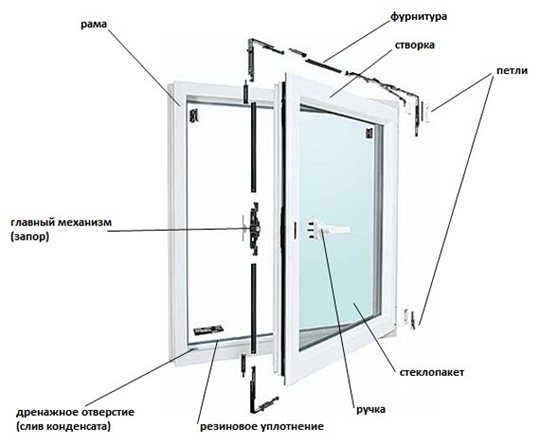

Plastic window device
The main functional parts of the fittings:
- Steel plates (outer and inner) located along the perimeter of the sash. In this case, the inner plate - or the so-called “tire” - is moving. It moves relative to the stationary outer one.
- The main lock located on the front side of the opening part of the window.
- Scissor arm or "scissors". Hold the sash at the top when opening the window.
- Corner gears. They are installed at the corners of the opening sash and serve to transfer movement from the main lock to the rest of the steel trim elements.
- Trunnions (eccentric rollers, "eccentrics") are oval or round elements mounted on the inner tire and protruding outward through the slots in the fixed steel plate.
- Mounting plates. Fixed elements attached to the window frame, designed to fix the trunnions when the window is closed.
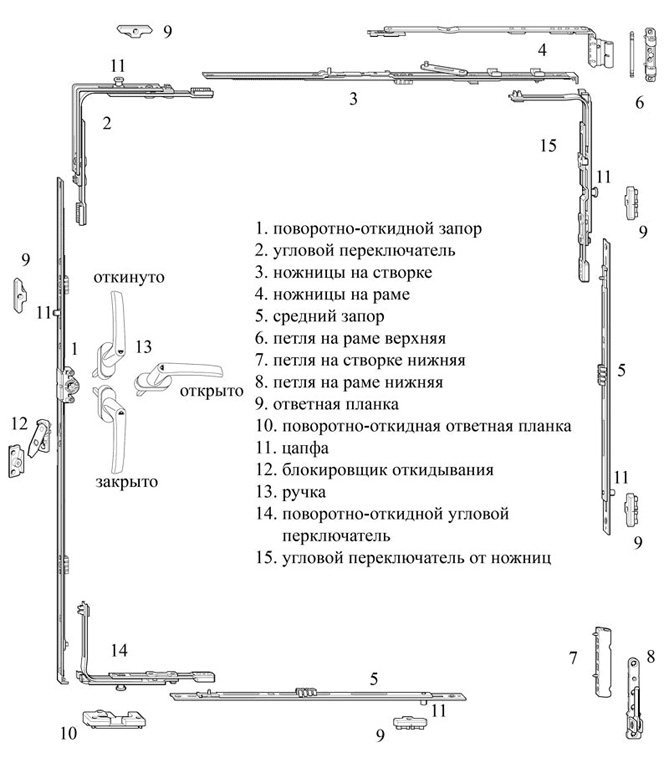

PVC window fittings scheme
The principle of the mechanism is quite simple. Turning the knob causes the transmission bus with trunnions to move. They slide out of the grooves of the striking plates and the window opens. In the ventilation mode, all the eccentrics move aside, except for those located in the lower part of the sash. When the handle is pulled down, the trunnions are pushed into the “answer” and the window is securely closed.
When there is a need to adjust window fittings
Adjustment of window fittings may be required in the following cases:
- the design does not retain heat well in the room, drafts appear; the handle does not close completely, dangles or, conversely, turns with difficulty; the sash sags and touches the frame during movement.
Why are these problems occurring? There may be several reasons.
- Deformation of fittings elements. This often happens with low-quality, cheap products.
- Improper operation of the structure - turning the handle when the window is open, abrupt closing until it stops, etc.
- Unfavorable weather conditions. Each product is designed for operation in a certain temperature and humidity conditions, otherwise individual window elements will not function properly.
- Violation of the technology for installing structures.
- House shrinkage.
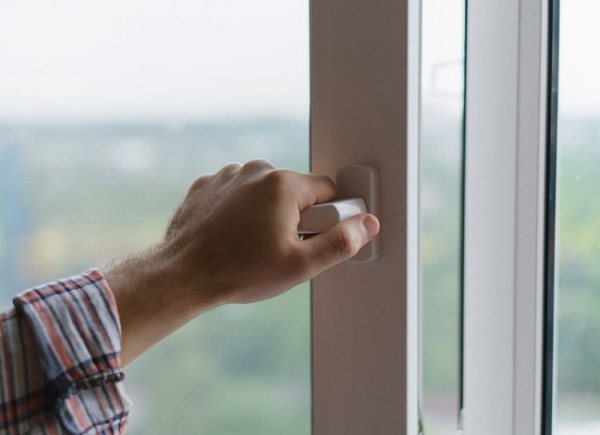

Stiff movement of the window handle may damage the entire locking mechanism.
Another reason why it is necessary to adjust the pressure fittings twice a year is the service life of the seal. By weakening the pressure in the summer and increasing it in the winter, you protect the seal from drying out, loss of volume and deformation. Adjusting to the changing temperatures during these seasons also reduces the internal stress of the window structure.
SEAL REPLACEMENT
Since window blowing can occur due to wear of the sealing gum, do not forget to monitor its condition. It is a gasket made of various materials (rubber, silicone or thermoplastic) of a tubular structure. Its main task is to seal the joints, which increases the protective properties of the profile.
Even the highest quality material will need to be changed over time. Regular exposure to different temperature indicators, water, dust leads to the loss of the rubber seal of its functional properties - insulating. Usually, this problem occurs 5-7 years after the installation of a plastic window structure (balcony door).
Initially, cracks form, which are no longer able to prevent moisture penetration. At low temperatures, wet gum is highly susceptible to tearing, which is why wind, cold, dust, and noise easily enter the room.
In addition, a breach of tightness can cause water to access the window parts, and this, in turn, reduces its service life. Timely replacement of the gasket will help to avoid this.
A shrunken or damaged seal is easy to change. You need to remove the old rubber band from the groove, and then carefully put a new one without stretching (this is important). To keep it at the proper level of insulation longer, wipe it down and lubricate it with silicone grease several times a year. Try not to use harsh cleaning agents that can damage the parts.
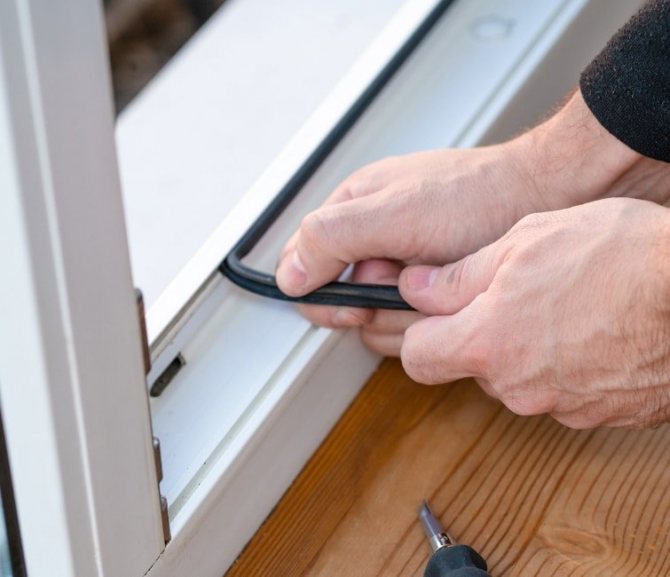

PVC window adjustment points
If you are going to adjust the operation of the window hardware yourself, you need to know the specific points of its adjustment. They are different for each malfunction, but they are necessarily associated with the locking mechanism.
- Bottom loop. Adjusting the fittings in this place allows you to adjust the position of the movable sash vertically and its lower edge horizontally. Top loop. The adjustment allows you to straighten the position of the upper part of the sash horizontally. Locking pins. With their help, you can set the pressing force of the sash to the window frame. Directly window handle. Troubleshooting in this place allows you to ensure smooth movement of the handle and a snug fit of the locking pin to the striker.
Self-adjustment of plastic windows
Self-calibration of a plastic window is a matter of minutes if you know where to look for problems. To do this, place a sheet of thin paper or newspaper between the open sash and the frame, then close the window. If the sheet is not pressed tightly or the line of its clamping is beveled, then it is necessary to adjust the clamping of the sash in this place or align it along the vertical or horizontal axis.
Required tools
To work, you should stock up on a set of simple tools. However, it is advisable to have a complete set so that no difficulties arise in the midst of adjustment. You must have:
- 4mm hexagon wrench. It is an L- or S-shaped tool most often used to repair PVC windows. Aerosol WD-40. Screwdriver set including star and Phillips. Pliers. Machine oil. It is necessary to facilitate the movement of moving parts.
Also, there should be a pencil at hand for drawing marks indicating the location of the sash, a rag to remove dirt from the fittings.
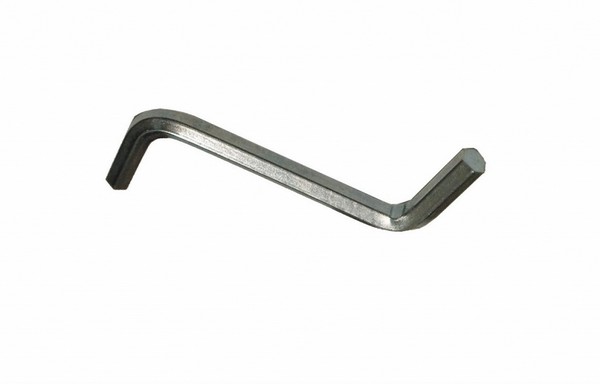

S-shaped hex key is more convenient than L-shaped in the process of work
Sash pressure adjustment with pins
This is the easiest way to restore normal window operation and eliminate unwanted blowing. Provides a firm hold on the sash in the front part where the handle is installed. Depending on the type of fittings, it is performed in different ways:
- Manually. To do this, you need to slightly pull the trunnions towards you and turn them in the desired direction. Please note: some types of eccentrics move to the side when turning.
- With a hex wrench.
- Using a screwdriver or pliers.
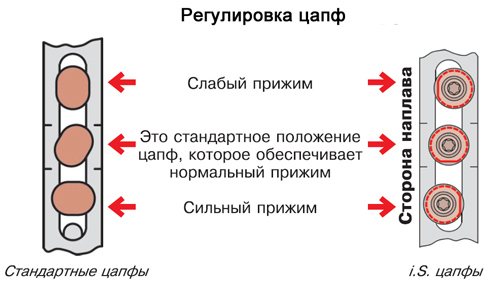

Eccentric adjustment diagram
Some pins have risks - marks in the form of short dashes, dots. Their location allows you to determine the quality of pressing the sash to the frame. If the risk "looks" towards the street, then it is weak, and into the room - strong.
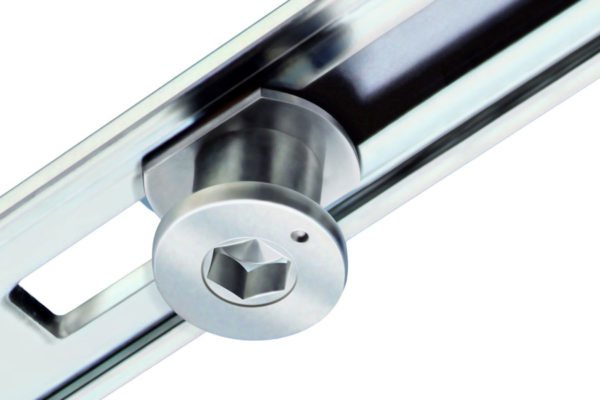

Special mark on the locking pin
In some cases, when the adjustment of the eccentrics is not possible, the location of the striker is changed. To do this, unscrew the screw holding it, move the bar towards the street or room and reattach it to the frame.
Adjusting the window structure using the bottom hinge
As a rule, the adjustment of the pressure begins precisely with the main constipation. Then they move on to working with loops.
If you remove the decorative plastic plug from the lower hinge, then you can find hexagon wrench bolts under it. Two of them will be located at the very bottom of the loop (on the inside and outside), the third - in the groove, as if inside it.
You can move the sash along the vertical axis if you insert the “hex” into the groove located at the top of the hinge and turn it. Turning clockwise to lift the sash, counterclockwise to move it down. In this case, movement (adjustment stroke) is possible within 2 mm.
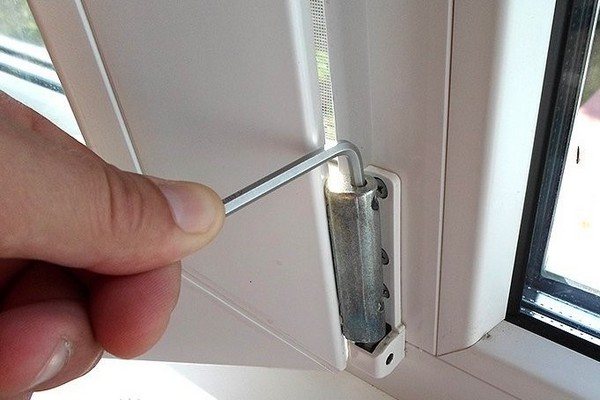

Work with hinges is carried out only when the window is open.
The bolt located at the bottom of the hinge allows you to change the horizontal position of the sash. To move to the right, turn the hex wrench counterclockwise. To move to the left - in the direction of its movement. In this case, the adjustment of the locking mechanism is also possible only within 2 mm.
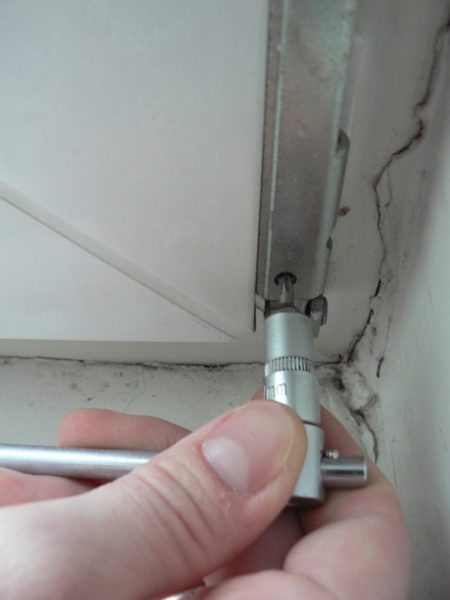

Sash alignment along the horizontal axis
Video: adjusting the window using the bottom hinge
Sash adjustment with the upper hinge
A similar adjustment can be made in the area of the upper hinge. However, in most cases, the owners of plastic windows install tilt-tilt fittings that allow the use of the structure in the ventilation mode. This entails some difficulties.
So, to increase the pressure, it is necessary to change the position of the adjusting bolt on the scissor arm. To get to it, you must open the window at the same time in pan and tilt mode. To do this, perform the following sequence of actions:
- Open the window in rotation mode.
- Find and release the blocker in the upper part of the sash, while simultaneously turning the knob to the ventilation mode. The bollard easily moves away from one of the locking pins, and the sash hangs freely on the “scissors”.
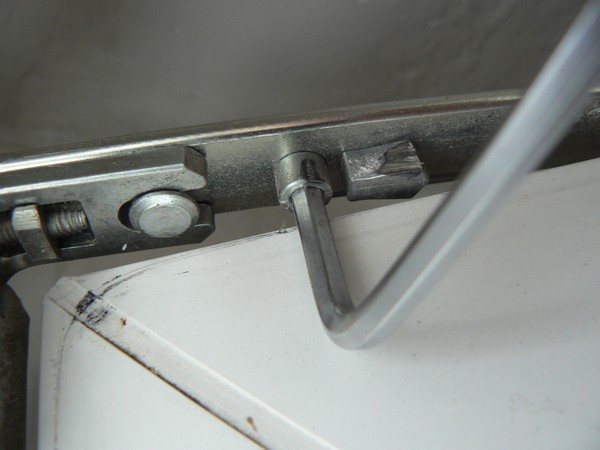

Hold the window when working with the clamping eccentric on the "scissors"
Video: how to adjust the pressure mechanism
To move the upper part of the sash to the right or left, you need to open the window wide, find a groove for the “hexagon” in the end part of the fittings and make the required number of turns clockwise or counterclockwise.
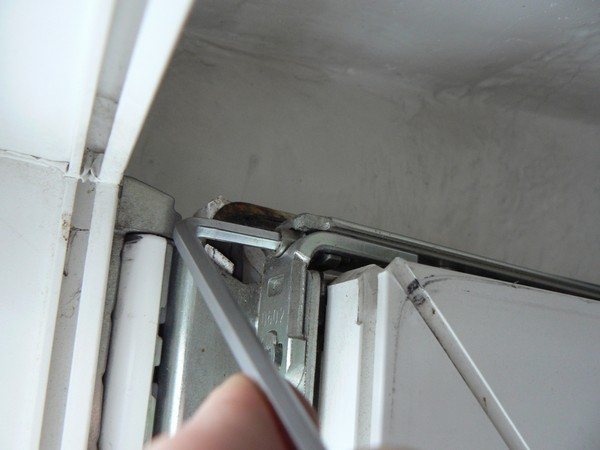

Adjusting the top of the window
Video: Troubleshooting the Top Hinge of a Plastic Window
Repair and adjustment of the handle
The adjustment of the window or door handle depends on the type of problem. If it just loosened, it is enough to pull on the plastic plug located parallel to the frame and turn it - the elements fixing the handle will open. You just need to tighten them a little tighter.
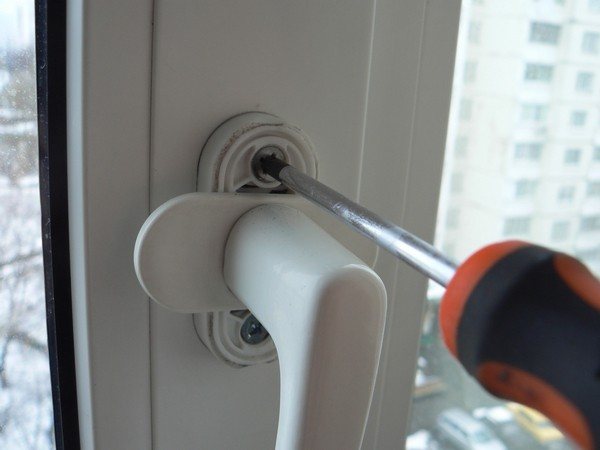

If the handle is stiff or does not turn completely, you will have to remove it. To do this, they also turn the plug, unscrew the fasteners and slightly pull the handle towards you. The resulting hole must be inspected for foreign objects and dirt. It is also important to assess the integrity of the removed item. If there are deformations, it is better to purchase a new product. If everything is in order, you can simply lubricate the operating mechanism of the handle with machine oil and put it back.
Handle jammed? This happens if the corresponding lock on the front of the sash sticks. It usually looks like a small spring plate or a metal tongue. For further normal operation of the handle, this blocker is manually squeezed towards the seal. In this case, the sash should be located strictly vertically.
What tools do you need?
Before proceeding with the adjustment of the window, it is necessary to prepare the tools. You will need:
- 4mm hexagon wrench. This tool is used for customization first.The shape of the key can be any, for example, curved in the form of the letter "L". Professional keys have a bend on one side to make them comfortable to hold.
- Star-shaped screwdriver bits (marking T, TX). They will be required only for some models of accessories, but just in case it is better to purchase them as well.
- Phillips screwdriver (size 3 or 4). Usually, the hardware is attached to the window with screws for a regular Phillips screwdriver. In order to replace the handle or adjust it, you need a Phillips screwdriver. The easiest adjustment option is adjusting sliding structures. In this case, it is only necessary to adjust the distance of the roller carriages.
- Pliers or pliers.
- Aerosol WD-40 or machine oil for lubricating fittings.


